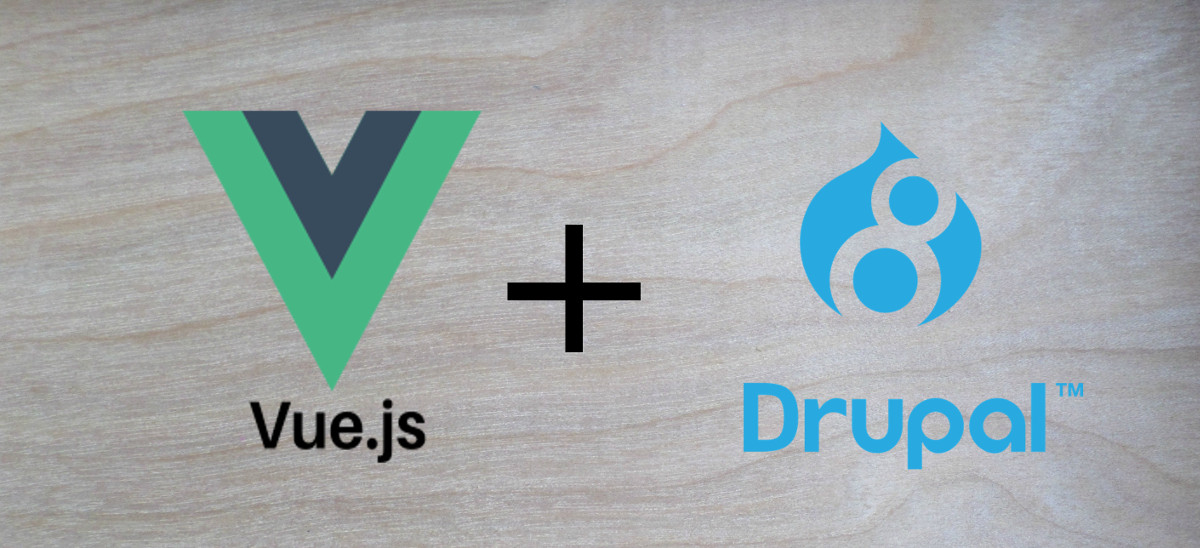Start basic application with Vue.js 2 and Drupal 8

Introduction
The purpose of creating this post is to show how fast can you build web applications with Vue.js on the front-end and Drupal on the back-end side.
Let’s call our project “Awesome Nerds”.
What do we need?
- Debian/Ubuntu system
- Internet
- 30 minutes
- Vagrant & VirtualBox
- Git
- Vim
- Yarn
Step by step
Here’s what we’re going to do:
- Install Vagrant, VirtualBox, and Git
- Setup a new Drupal 8 project that will be our back-end project
- Setup a new Vue.js project that will be our front-end application
- Let’s code
Install Vagrant, VirtualBox, and Git
Open your console and run:
$ sudo apt-get install software-properties-common - getting some common libraries
$ sudo apt-add-repository ppa:ansible/ansible
$ sudo apt-get update
$ sudo apt-get install ansible - installing Ansible
$ wget ‘https://releases.hashicorp.com/vagrant/2.0.2/vagrant_2.0.2_x86_64.deb’ && dpkg -i vagrant_2.0.2_x86_64.deb - installing Vagrant
$ sudo apt-get install dkms
$ deb https://download.virtualbox.org/virtualbox/debian <mydist> contrib
$ wget -q https://www.virtualbox.org/download/oracle_vbox_2016.asc -O- | sudo apt-key add -
$ wget -q https://www.virtualbox.org/download/oracle_vbox.asc -O- | sudo apt-key add -
$ sudo apt-get update
$ sudo apt-get install virtualbox-5.2 git vim nfs-kernel-server - installing VirtualBox
$ vagrant plugin install vagrant-vbguest
$ curl -sS https://dl.yarnpkg.com/debian/pubkey.gpg | sudo apt-key add -
$ echo "deb https://dl.yarnpkg.com/debian/ stable main" | sudo tee /etc/apt/sources.list.d/yarn.list
$ sudo apt-get update && sudo apt-get install yarn - installing Yarn
Now we can continue to the back-end project installation.
Install and setup back-end project
Create a new folder for the project:
$ mkdir awesome_nerds && cd awesome_nerds
$ mkdir frontend backend
We need to clone the DrupalVM repository. DrupalVM is a Drupal setup that helps to encapsulate services with Vagrant. Run:
$ cd backend
$ git clone git@github.com:geerlingguy/drupal-vm.git .
Let’s name our project:
$ vim default.config.yml
Look and set these two settings so they look like this:
vagrant_hostname: awesomenerds.backend
vagrant_machine_name: awesomenerds_backend
Quit Vim and run:
$ vagrant up
It will take a while to set up everything, you can get a coffee or browse some memes or go to the next chapter and start creating our front-end project.
When it’s ready we will have a running Drupal 8 setup with MySQL, PHP 7, and Apache (you can configure this stack in default.config.yml if you prefer nginx for example).
Drupal project files are in the drupal directory and that’s the only folder that you would want to add to a project Git repository.
Setup new Vue.js project
We will use a minimal project skeleton from https://github.com/vuejs-templates/webpack.
Run:
$ cd awesome_nerds/frontend
$ git clone https://github.com/vuejs-templates/webpack .
$ yarn install -g vue-cli
$ vue init webpack awesome_nerds
Name the project “awesome_nerds” (yes!) and just hit enter to install with defaults.
When you run:
$ yarn run dev
you will get a fresh Vue.js application running on http://localhost:8080.
Let’s code!
Now we are ready for development. It can be really rapid, both Vue.js 2 and Drupal 8 are impressively good and it’s just a matter of finding a good idea for your new start-up.
In my next post I will continue and code a simple social application using the REST API of Drupal and our Vue.js front-end.
Thank you and good luck!
vue drupal javascript php open-source

Comments